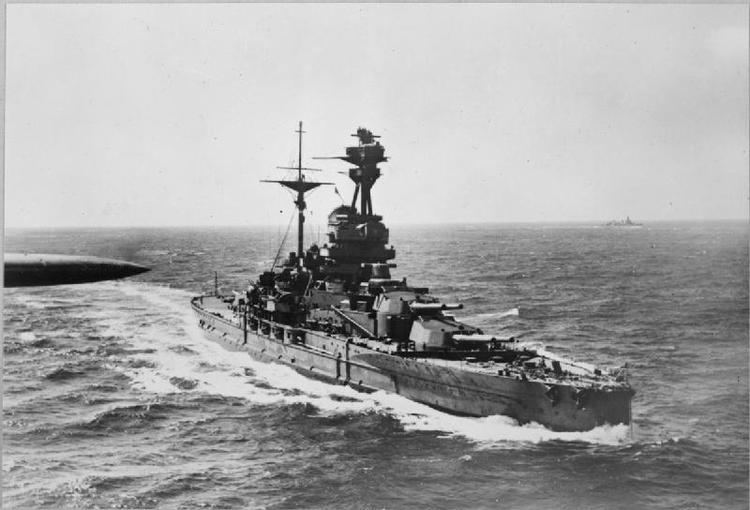Active 1912–1945 Branch Royal Navy | Country United Kingdom Size Squadron | |
 | ||
The British 1st Battle Squadron was a naval squadron consisting of battleships. The 1st Battle Squadron was initially part of the Royal Navy's Grand Fleet. After World War I the Grand Fleet was reverted to its original name, the Atlantic Fleet. The squadron changed composition often as ships were damaged, retired or transferred.
Contents
First World War
As an element in the Grand Fleet, the Squadron participated in the Battle of Jutland.
August 1914
On 5 August 1914, the squadron was constituted as follows:
Battle of Jutland, June 1916
During the Battle of Jutland, the composition of the 1st Battle Squadron was as follows:
1917 and 1918
Following the Battle of Jutland, the 1st Battle Squadron was reorganized, with Colossus, Hercules, St. Vincent, Collingwood and Neptune all transferred to the 4th Battle Squadron. In January 1917, the squadron was constituted as follows:
By 1918, Agincourt had been transferred to the 2nd Battle Squadron, and Resolution, Ramillies and Iron Duke had joined the squadron on completion.
Second World War
For many years the squadron served in the Mediterranean as the main British battle force there. On 3 September 1939 the 1st Battle Squadron, serving in the Mediterranean Fleet, consisted of Barham, Warspite, and Malaya, with headquarters at Alexandria, Egypt, under the command of Vice-Admiral Geoffrey Layton.
In December 1943 the Squadron was under the command of Vice Admiral Arthur Power. In January 1944 the Eastern Fleet was reinforced by HMS Queen Elizabeth, HMS Renown, HMS Valiant, HMS Illustrious, HMS Unicorn, and seven destroyers. The Admiralty sent this force out to India under the title of the First Battle Squadron.
From November 1944, the squadron served in the British Pacific Fleet under the command of Vice-Admiral Henry Rawlings, who also serviced as Second-in-Command of the Fleet. It consisted of HMS King George V, HMS Howe, HMS Duke of York, and HMS Anson at various times.
Commanders
Commanders were as follows:
